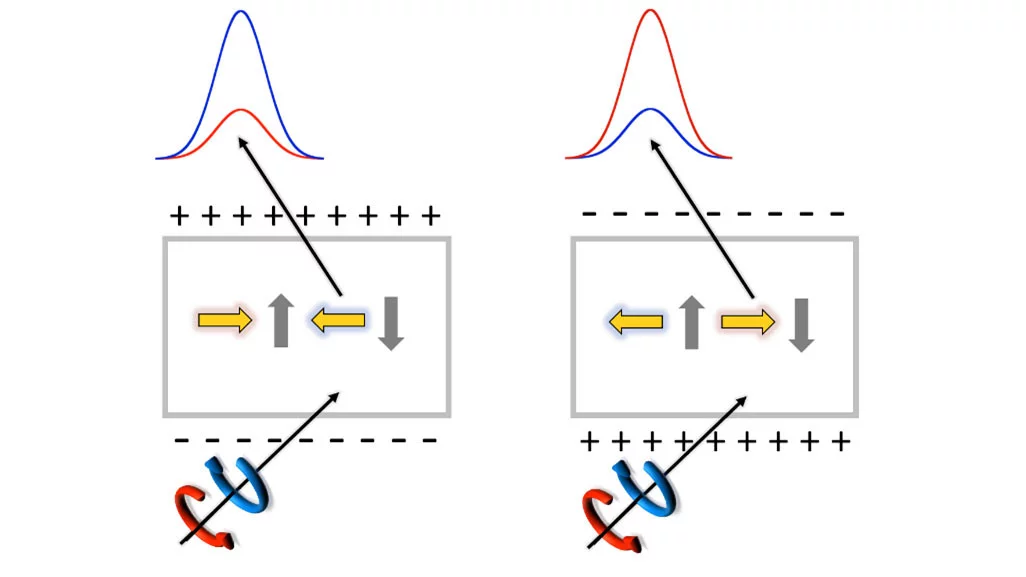In our recent paper we examined YNiO3 and proved that the RNiO3 type material known for its metal-insulator transition is in fact a type II multiferroic. We provide direct evidence of an electric-field-driven switch of the noncolliear magnetic state finally confirming the proposed type II multiferroic nature of YNiO3.
Correlated electron systems that are exemplified by perovskite oxides are key in condensed matter physics due to the strongly coupled lattice, spin, electron, and charge degrees of freedom. This interconnectedness means there are myriad possibilities to push one functionality and receive a conjugate response. Multiferroics are highly prized due to the coupling of charge and magnetic degrees of freedom which are the prime functionalities for device applications, e.g. combining fast moving charge and the control magnetic states that is key for information technology. In nickelates especially, the recent discovery of superconductivity has driven renewed interest to explore the nature of coupled charge and magnetism.
The RNiO3 series (where R is a Lanthanide or Y) has been predicted to be a type II multiferroic at low temperatures, meaning that the ferroelectric and magnetic order are coupled and can be used to control one another. Previous experiment examining the phonon modes of RNiO3 indicated a loss of inversion symmetry in the low temperature phase, yet a demonstration of the coupled ferroelectric and magnetic orders needed to confirm the multiferroic nature of the material remained elusive.
Our discovery
We used resonant soft x-ray diffraction with circularly polarized light that is sensitive to the noncollinear magnetic state of YNiO3. We observe the noncollinear low temperature state in polycrystalline samples that are free of extrinsic strain-driven effects allowing us to characterize the intrinsic magnetic response of YNiO3. Most importantly, we use an applied electric field to switch the magnetic state, providing a direct confirmation of the ferroelectric-magnetic coupling to finally prove the type II multiferroic nature of this material.
Implications and future directions
Our findings confirm the theorized classification of YNiO3 as a type II multiferroic. Our work resolves the long-standing open question of whether multiferroicity is possible in the RNiO3 series and demonstrates a pathway to explore in further depth the nature of the magnetoelectric coupling.
Contact
Dr. Elizabeth Marie Skoropata
PSI Center for Photon Science
+41 56 310 56 89
elizabeth.skoropata@psi.ch
Dr. Urs Staub
PSI Center for Photon Science
+41 56 310 4494
urs.staub@psi.ch
Original Publication
Magnetoelectric effect in multiferroic nickelate perovskite YNiO3
Nazaret Ortiz Hernández, Elizabeth Skoropata, Hiroki Ueda, Max Burian, José Antonio Alonso, and Urs Staub
Communications Materials 5, 154 (2024), https://doi.org/10.1038/s43246-024-00604-2 (link is external)

